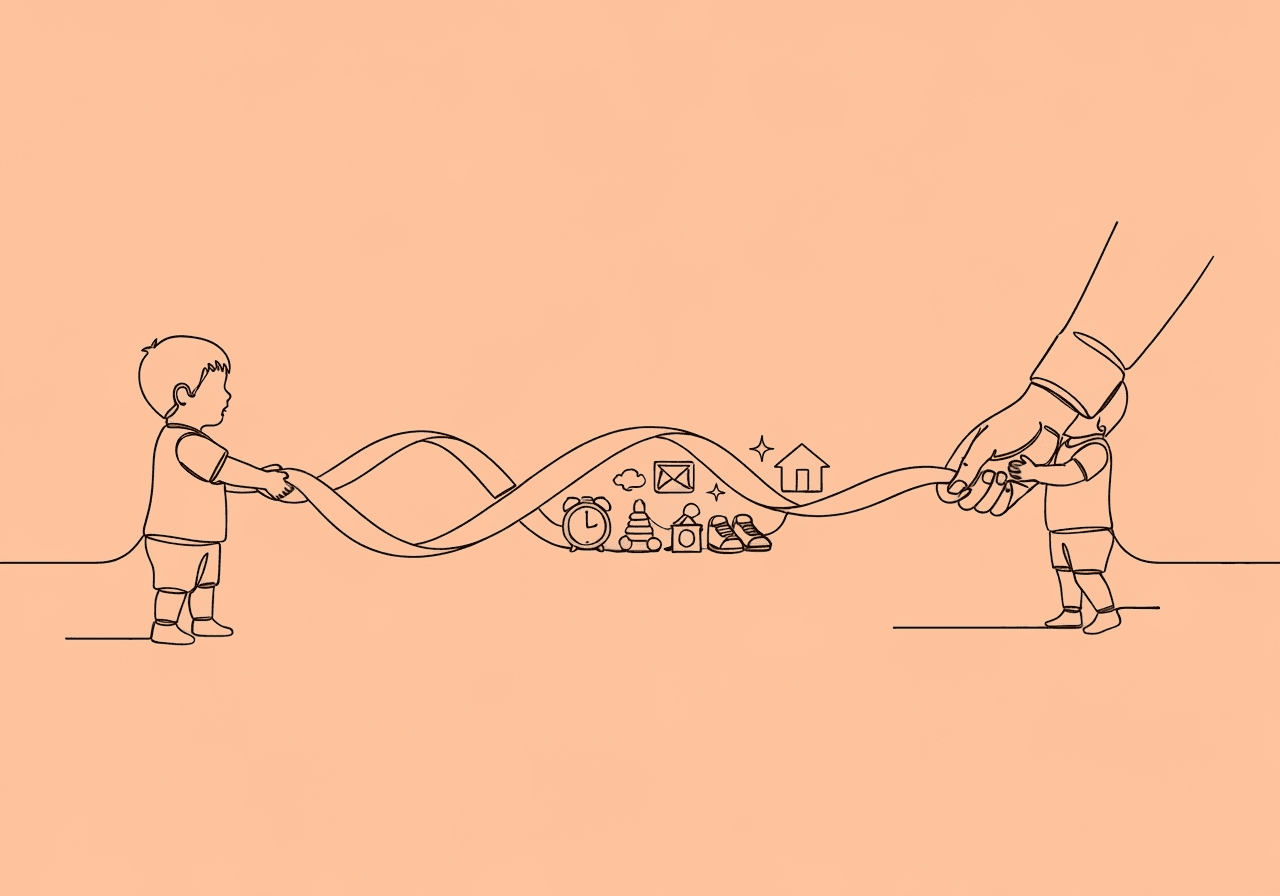ABA Home Data IEP: Empower Parent Advocacy

Supporting a child with autism can feel daunting, but your insights as a parent are invaluable. Bridging home life with school goals often hinges on effective ABA home data IEP documentation. By collecting and sharing objective data from everyday moments, you can empower your child's educational plan to better reflect their true progress and needs.
This guide offers practical steps to turn your observations into advocacy tools. You'll learn how to gather reliable home data, compile reports, and collaborate with your child's team. With these insights, you can confidently advocate for services that truly support your child's growth.
Understanding the IEP Process and the Power of Parent Input
The Individualized Education Program (IEP) is a legal document under the Individuals with Disabilities Education Act (IDEA) that outlines your child's educational goals and services. For autistic children, IEPs often include supports tied to ABA therapy. Your input provides real-world context that school teams might otherwise miss.
Active parental involvement leads to more tailored plans and better outcomes, as noted by the Council of Parent Attorneys and Advocates (COPAA). Sharing home observations helps synchronize school goals with ABA strategies, ensuring consistency. Without this, a child might succeed in therapy but struggle in class due to unaddressed triggers.
Before meetings, review your child's current IEP. Note their strengths, challenges, and how home routines support learning. The U.S. Department of Education's guide on parent rights under IDEA can help you prepare questions and data to influence decisions effectively.
The Role of ABA Therapy in Strengthening IEP Goals
Applied Behavior Analysis (ABA) uses evidence-based techniques to teach skills and reduce challenging behaviors. It focuses on positive reinforcement and data-driven adjustments, directly supporting IEP objectives. When integrated well, ABA helps children generalize skills from therapy to school and home.
A scoping review from the National Center for Biotechnology Information (NCBI) indicates that 47% of children in intensive ABA programs achieve typical intellectual and educational functioning. Parent involvement amplifies this effect. Studies show that when families reinforce ABA strategies at home, skill acquisition accelerates.
For example, if an IEP targets communication, ABA might use a picture exchange system. You can track how your child uses this system in non-therapy settings, like during family meals. This data reveals if goals need adjustment, such as adding peer interaction supports. You can learn more from our guide on treatment alignment.
Practical Methods for Collecting Reliable ABA Home Data
Gathering ABA data for parents doesn’t require complex tools—just consistency. Work with your Board Certified Behavior Analyst (BCBA) to define target behaviors, like the frequency of self-initiated requests. Use simple methods like frequency counts (tallying occurrences), duration tracking (how long a behavior lasts), or ABC notes (antecedent, behavior, consequence).
Parent training can equip you to collect accurate data on one or two behaviors at a time, reducing overwhelm. For instance, note how often your child uses a taught social skill during homework. Short video clips can also capture skill generalization, such as applying turn-taking skills from therapy to playtime.
Aim for brief, daily entries. Consistency is more important than perfection. Standardizing data collection formats with the school staff helps coordinate everyone's efforts. This objective data is invaluable for IEP discussions, showing real-life patterns. Resources like datasheets from the NYSABA Parent Resources page can make this process more accessible.
How to Use ABA Home Data in an IEP for Advocacy
Raw notes are powerful, but they need structure to influence an IEP. Organize your data into simple summaries, like a chart showing progress over time. A line graph could visualize a reduction in tantrums over several weeks. Free tools like Google Sheets can make these patterns clear and easy to understand.
Data should be presented in concise reports. For example, "Child used verbal requests 8/10 times during meals this month, up from 3/10 last month." Include context, such as the setting or supports used, to highlight generalization. Share these reports with your BCBA for review so they can be refined into a professional format.
For parent IEP advocacy, present these reports as evidence, not anecdotes. Objective summaries help the team adjust services, such as increasing speech therapy if home data shows stalled progress in communication. Keeping reports neutral and factual builds trust and reinforces your role as a collaborative partner.
Advocating for Measurable Goals and Adjustments
Your ABA home data IEP documentation is a tool for change. Use it to advocate for specific, measurable goals that align with IDEA standards. An example is, "Child will initiate a conversation with a peer four times during recess by the end of the semester." If your data reveals gaps, like regression during school transitions, you can advocate for added support like a behavior intervention plan (BIP).
Bring graphs and examples to meetings to illustrate your child's needs concretely. If home videos show skill success but school reports don't, you can request further evaluations or service increases. Systematic reviews of ABA efficacy from NCBI show positive effects in behavioral domains, and your data can help tailor these interventions.
Be prepared by reviewing your rights through resources like Understood.org's IEP advocacy guide. If discrepancies arise, propose a trial period for new strategies.
Tips for Effective Communication and Collaboration
If data from home, ABA, and school differs, address it with open dialogue. Schedule regular check-ins with both teams and share monthly summaries to spot gaps early. Frame discussions around shared goals, such as, "How can we replicate the success we're seeing at home in the classroom?"
Inviting your BCBA to IEP meetings can also be beneficial, as they can explain the data from a technical perspective. If tensions arise, remain solution-focused. A study in JMIR Pediatrics found that strong parent involvement improves clinical outcomes. Building rapport pays off for everyone, especially your child.
Frequently Asked Questions
How can parents collect ABA data at home without feeling overwhelmed?
Start by working with your BCBA to identify one or two key behaviors. Use simple tools like a notebook or a tally app for just 5–10 minutes daily during a specific routine, like mealtime. Consistency is more important than collecting large amounts of data.
What role does parent involvement play in ABA therapy outcomes?
Parental reinforcement of skills at home helps children generalize what they learn in therapy to everyday situations. A retrospective chart review in JMIR Pediatrics showed that parent-led ABA can achieve clinical outcomes similar to practitioner-led therapy, which improves a child's independence.
How do you summarize home ABA data for an IEP meeting?
Compile your notes into simple charts or bullet points that show trends. For example, "Verbal requests increased by 50% over four weeks." Share your summary with your BCBA for review before the meeting. Keep the report to 1-2 pages to provide concrete evidence without overwhelming the team.
What are common challenges in aligning ABA data with school IEPs?
Discrepancies often arise from different environments, methods, or communication gaps. These can be addressed by standardizing data collection tools and holding regular update meetings. If school data lags behind home progress, use your visual data to advocate for adjustments.
How often should parents share ABA home data with the teams?
Sharing summaries weekly or bi-weekly via email or a shared app keeps everyone informed and allows for timely adjustments. As noted by experts at Total Care ABA, timely data leads to better outcomes.
Can parents request that the ABA team attend IEP meetings?
Yes. Under IDEA, you can invite providers like a BCBA to contribute their expertise. This helps ground the discussion in objective evidence and promotes better alignment between the school and therapy teams.
Leveraging ABA home data IEP documentation transforms you into a proactive advocate for your child. This data-driven approach bridges the gap between home and school, leading to more tailored services and measurable progress.
To get started, partner with your BCBA to identify one or two behaviors to track. Before your next team meeting, compile a simple data summary with visuals. By prioritizing parent IEP advocacy and using ABA data for parents, you are building a brighter, more supportive path for your child.
Popular in Family Resources
- 1
Autism Aggression Family Guide: Working with ABA Teams
30112 min read - 2
ABA Treatment Plan for Parents: Essential Guide
2626 min read - 3
Reinforcement Schedule Fading for Parents: ABA Essentials
2476 min read - 4
Understanding ABA Progress Notes for Parents (Without the Overwhelm)
2315 min read - 5
ABA Session Data for Parents: Unlock and Interpret
2117 min read
Popular in Family Resources
- 1
Autism Aggression Family Guide: Working with ABA Teams
30112 min read - 2
ABA Treatment Plan for Parents: Essential Guide
2626 min read - 3
Reinforcement Schedule Fading for Parents: ABA Essentials
2476 min read - 4
Understanding ABA Progress Notes for Parents (Without the Overwhelm)
2315 min read - 5
ABA Session Data for Parents: Unlock and Interpret
2117 min read
Related Resources
Explore more helpful content on similar topics

ABA Session Data for Parents: Unlock and Interpret
Unlock ABA session data for parents: interpret progress reports, decode jargon, apply home carryover strategies, and communicate effectively with your BCBA. Empower your role in your child's autism therapy success.

ABA SMART Goals for Parents: Family Success Guide
Discover ABA SMART goals for parents to collaborate on family priorities in therapy. Learn simple ways to track ABA progress at home, adjust plans, and celebrate your child's growth for family success.

ABA Progress Report for Parents: A Beginner's Guide
Discover how to read your child's ABA progress report for parents. Learn to interpret goals, data trends, and home observations to support reauthorization and continued autism therapy services.